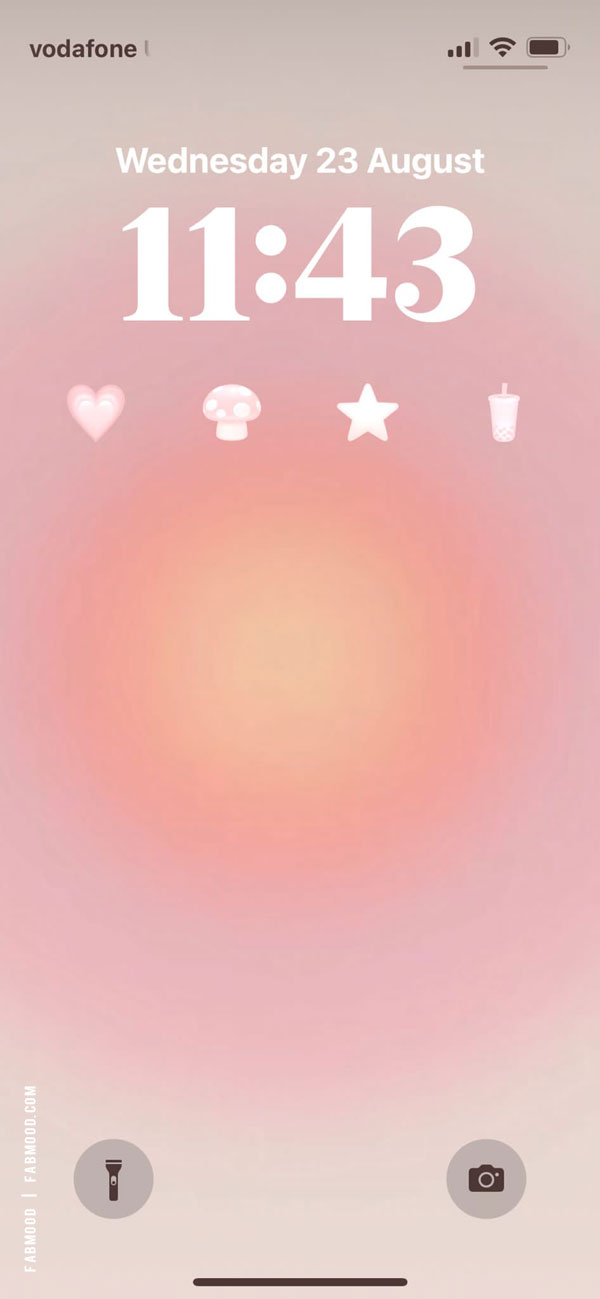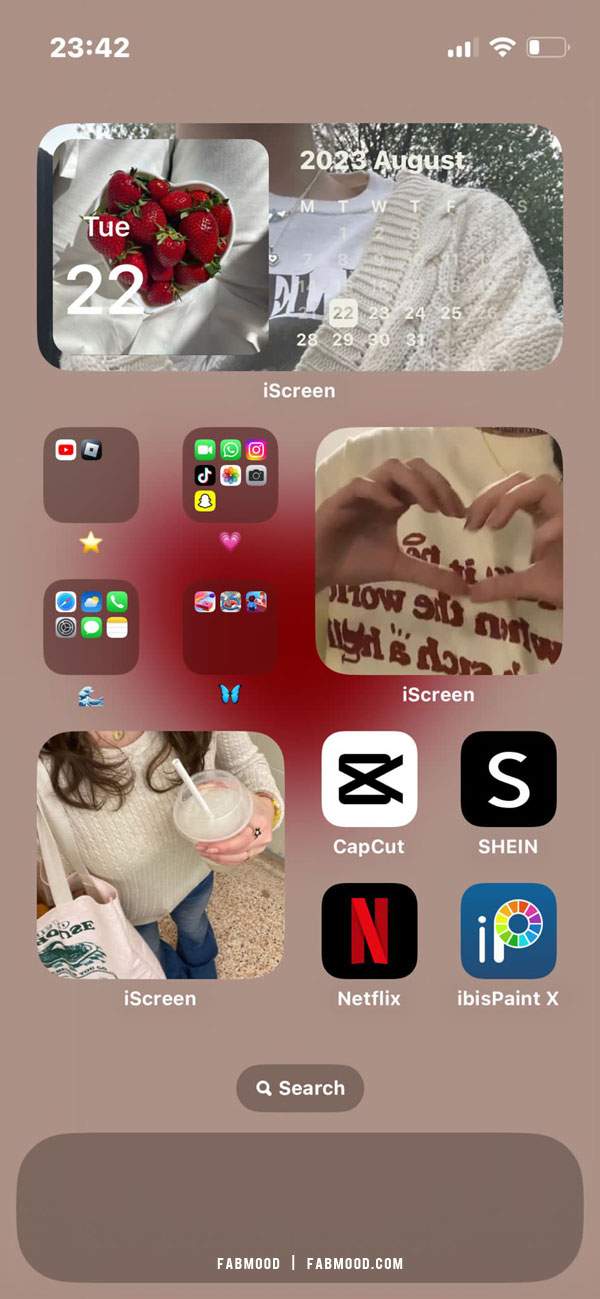The Art of the iPhone Home Screen: More Than Just a Pretty Picture
Related Articles: The Art of the iPhone Home Screen: More Than Just a Pretty Picture
Introduction
With enthusiasm, let’s navigate through the intriguing topic related to The Art of the iPhone Home Screen: More Than Just a Pretty Picture. Let’s weave interesting information and offer fresh perspectives to the readers.
Table of Content
The Art of the iPhone Home Screen: More Than Just a Pretty Picture

The iPhone home screen, a seemingly simple canvas, holds the key to a personalized digital experience. It’s the first thing users see when they unlock their devices, a visual gateway to their digital lives. While its primary function is to provide access to apps and widgets, the home screen’s aesthetic appeal is far from trivial. It serves as a reflection of individual style, interests, and even mood, making the choice of wallpaper a surprisingly powerful form of self-expression.
Beyond aesthetics, the right home screen wallpaper can enhance user experience in several ways. It can improve visual clarity, reduce eye strain, and even boost productivity. This article explores the multifaceted nature of iPhone home screen wallpaper, delving into its design principles, psychological impact, and practical benefits.
The Power of Visuals: The Psychology Behind Wallpaper Choice
The human brain is wired to respond to visual stimuli. A visually appealing home screen can evoke positive emotions, creating a sense of calm, excitement, or inspiration, depending on the chosen image. This emotional connection can influence the overall user experience.
-
Color Psychology: Colors play a crucial role in visual communication. Warm colors like red and orange can evoke feelings of energy and excitement, while cool colors like blue and green are often associated with calmness and serenity. The choice of color palette can subtly impact the user’s mood and focus.
-
Image Choice: The image itself carries significant weight. Abstract patterns can create a sense of order and minimalism, while vibrant landscapes can transport the user to a different place. Pictures of loved ones, inspirational quotes, or personal artwork can provide a sense of comfort and motivation.
-
Personalization: The freedom to choose a wallpaper that resonates with the individual’s personality and preferences is a key factor in fostering a sense of ownership and connection with the device. It’s a personal touch that sets the iPhone apart as a unique extension of its owner.
Beyond Aesthetics: Practical Benefits of Thoughtful Wallpaper Selection
While the emotional impact of a home screen wallpaper is undeniable, its practical benefits shouldn’t be overlooked.
-
Improved Visibility: Choosing a wallpaper with high contrast between the background and the app icons can make the icons stand out, enhancing visibility and improving usability. This is particularly helpful for users with visual impairments.
-
Reduced Eye Strain: Dark mode wallpapers, often with a black or dark gray background, can significantly reduce eye strain, especially when using the phone in low-light conditions.
-
Enhanced Focus: Minimalist wallpapers with clean lines and a limited color palette can promote focus and reduce distractions, making it easier to concentrate on tasks.
-
Motivation and Inspiration: Uplifting images, inspiring quotes, or personal goals displayed on the home screen can serve as visual reminders and motivation boosters, particularly for users who struggle with procrastination or lack of focus.
Design Principles for Effective iPhone Wallpaper
Creating a visually appealing and functional home screen wallpaper requires a thoughtful approach to design principles.
-
Resolution and Quality: The wallpaper should be high-resolution to avoid pixelation on the Retina display. This ensures a sharp and crisp image, enhancing the overall visual experience.
-
Color Harmony: The color palette of the wallpaper should complement the app icons and the overall aesthetic of the device. This creates a cohesive visual experience and avoids jarring color clashes.
-
Contrast: The wallpaper should have sufficient contrast between the background and the app icons to ensure good visibility. This is especially crucial for users with visual impairments.
-
Simplicity: A simple and clean design is often more effective than a cluttered one. Avoid overly complex patterns or images that might distract from the app icons.
-
Personalization: The wallpaper should reflect the user’s individual style and interests. This personal touch makes the device feel more like an extension of the user’s identity.
FAQs: Addressing Common Questions about iPhone Home Screen Wallpaper
Q: Where can I find high-quality iPhone wallpapers?
A: There are numerous resources available for finding high-quality iPhone wallpapers, including:
- App Store: Several dedicated wallpaper apps offer a vast library of free and paid wallpapers.
- Websites: Websites like Unsplash, Pexels, and Wallhaven provide a wide selection of free, high-resolution images.
- Social Media: Platforms like Pinterest and Instagram are excellent sources for discovering unique and creative wallpapers.
Q: How do I set a new wallpaper on my iPhone?
A: Setting a new wallpaper on your iPhone is a straightforward process:
- Open the Settings app.
- Tap on Wallpaper.
- Choose Choose a New Wallpaper.
- Select your desired wallpaper from the available options.
- Adjust the wallpaper’s position and tap Set.
Q: Can I create my own iPhone wallpaper?
A: Absolutely! You can create your own unique wallpaper using various tools and resources:
- Photo Editing Apps: Apps like Adobe Photoshop Express, Canva, and PicsArt offer intuitive editing tools for creating custom wallpapers.
- Graphic Design Software: For more advanced users, software like Adobe Photoshop or Illustrator allows for greater customization and creative control.
Q: How can I personalize my iPhone home screen beyond wallpaper?
A: Beyond choosing a wallpaper, there are several ways to personalize your iPhone home screen:
- Widgets: Widgets provide quick access to information and tools directly on the home screen.
- App Icons: Customize the appearance of your app icons with different colors, shapes, and designs.
- Folders: Organize your apps into folders for a cleaner and more organized home screen.
Tips for Choosing and Using iPhone Home Screen Wallpaper
- Consider Your Lifestyle: Choose a wallpaper that aligns with your daily routine and preferences. For example, a calm and serene wallpaper might be suitable for a relaxing evening, while a vibrant and energetic wallpaper could be more appropriate for a busy workday.
- Experiment with Different Styles: Don’t be afraid to try different wallpaper styles to see what works best for you. Explore various color palettes, textures, and designs to find what resonates with your aesthetic.
- Update Your Wallpaper Regularly: Changing your wallpaper periodically can help maintain a sense of freshness and prevent monotony.
- Use High-Quality Images: Invest in high-resolution images for a visually pleasing and sharp display.
- Consider the Impact on Battery Life: Animated or live wallpapers can drain battery life more quickly. Choose static wallpapers for optimal battery performance.
Conclusion: The Home Screen as a Reflection of Self
The iPhone home screen is more than just a functional interface; it’s a canvas for self-expression. The choice of wallpaper, a seemingly simple decision, can have a profound impact on the user’s emotional connection with their device and enhance their overall experience. By understanding the psychological impact, design principles, and practical benefits of wallpaper selection, users can create a home screen that reflects their individuality and complements their digital lifestyle.








Closure
Thus, we hope this article has provided valuable insights into The Art of the iPhone Home Screen: More Than Just a Pretty Picture. We appreciate your attention to our article. See you in our next article!
